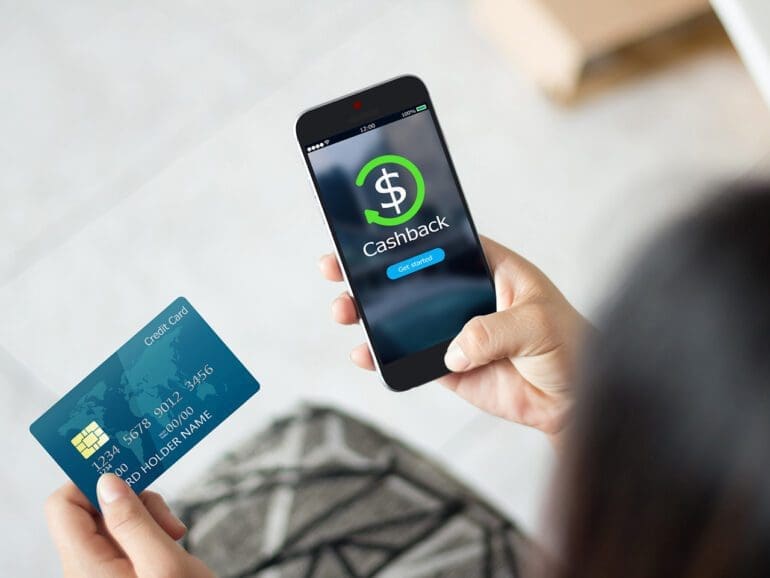The new year will see significant progress in the loyalty sector and the continued emergence of an environment where points become a de facto replacement for fiat currency.
That is among the trends being witnessed by Engage People and Wise Marketer Research Services, who recently published Pay With Points: Reducing the Friction in Loyalty Redemption. It includes a B2B survey of 26 United States-based credit card issuers and a B2C study of 200 American consumers.
Engage People is a provider of white-label technology in loyalty with customers, including five of the seven largest Canadian banks. They focus on providing personalized service to members with a critical interest in redemption.

Wise Marketer is a global publisher of education and research for the loyalty marketing industry.
Michael Capizzi, a partner at the Wise Marketer Group, said there is significant friction in the loyalty redemption space, with users needing to remember passwords, points piling up, and a cumbersome redemption process.
“It’s one of the reasons why people don’t like these programs as much as they thought they would when they first signed up,” Capizzi said.
He explained that the vast volume of unredeemed points is a massive liability for the program sponsor.
The sponsor must carry those points until they are redeemed. Make the redemption process more fluid, and the liability lessens because more points are being cashed in.
Growing awareness
There is also a growing awareness of the use of points as a way to remain connected to the customer so a company can understand their needs and maintain that relationship into the future, Capizzi explained.
“So we want them to redeem, we want them to enjoy the benefit,” Capizzi said. “We want them to say, ‘I got that benefit because I use this card from this bank.’ So anything we can do to increase the accessibility around that benefit is going to be smart.”
Some pay with points systems are limited to use at a single brand, such as a gas station, Capizzi said. Yes, you get the option to pay with those points, but it is limited to one brand and one product. It has limited utility and growth prospects.

Engage People’s CTO Len Covello said the ultimate aim is a system where the consumer can shop across brands and product sectors both on and offline and pay with points as a valid substitute for fiat.
“And according to the research report, consumers love this idea, but they’re just not very much aware of it because it doesn’t exist a whole lot,” Covello explained.
“It’s a little bit too isolated today. So that’s what drove us to look at this, and we were encouraged, especially by what the consumer said.”
For the past 25 years, the strong consumer preference has been cash, Capizzi said. They know how much it takes to get a buck back — it’s easy to understand and affordable for the issuer. The lesson for every program lies in this — provide value, convenience, and flexibility.
Education important
One certainty is providers need to do a better job of educating merchants because many think they already have a good pay with a points system in place when they do not, mainly because they have no idea of what a system can bring.
Make those benefits widely available and ensure consumers know about them and they will indeed be used, Covello and Capizzi said. In the survey, 12% of respondents said that ability to use rewards as a currency would increase the burn rate of those points.
COVID-19 accelerated this desire to use points like fiat, Covello said. The sudden shift to lockdown left people open to using other payment methods as they were conscious of their savings and feared job loss and life disruption during the early days of the pandemic.
But the desire to have more utility from rewards programs easily predates COVID-19. It provides a personalized experience. That’s why cash is so popular, as were gift cards because consumers struggled to liquidate their points with brands they wanted to spend at.
Covello also said many reputable loyalty programs are growing more comfortable in their brand identities and are working on partnerships that allow people to redeem at other brands.
That association still comes back to where they earned their points. That openness also builds on the desire not to carry the long-term liability.
Loyalty comes from earning AND redeeming
“There has always been this kind of cloudy, ‘we don’t want people to redeem their points’ out there in the industry, but that’s really not the case,” Covello explained.
“Loyalty comes from earning and redeeming, and that cycle happening again and again. So they want that liability off the books not just from a financial perspective, but a lot of burn equates to a good loyalty program. So I think that’s something that’s really not out in the market.”
“But what the consumer said is if my bank gave me a credit card with a pay with points feature on it, I would stay with that bank,” Capizzi said.
“In fact, some said they would consider switching the bank that they had over to the bank that offered that particular feature because it would give them a lot of value, convenience, and flexibility. That’s powerful. This is an industry where usually switching doesn’t happen very often.”
Covello said he is seeing momentum in brands offering a broader pay with points capability, including a large e-commerce brand and several financial institutions. That increased adoption is needed for the concept to take off with consumers.
The more places they see it, the more curious they’ll get and the more utility they will see it has.
This awareness to provide more utility for pay with points has been around for at least five to seven years, Covello estimates.
He began discussing the issue with brands back then as they were concerned about the 50 percent of 200 billion points awarded every year going unredeemed. They saw the promise of points as currency, but few wanted to be the first, and all were concerned about friction impacts at checkout.
Like many changes, it was spurred out of necessity, as consumers looked for new purchasing methods during the lockdown. The industry saw a 600 percent lift in redemption.
Tech handles complexities
Covello said the back-end technology takes care of most of the complexities around redemption, such as point equivalencies. The next step is providing differential redemption rates so different consumers can earn to varying rates at one brand. Promotions offering different points are also differentiators.
Capizzi said the sector is moving to a period where the technology makes the benefits completely transparent.
He believes blockchain (not cryptocurrency, he was clear to say), with a distributed and shared ledger allowing everyone to see what the points are worth. He likens it to landing at a foreign airport and seeing the different exchange rates at the currency counters.
“What’s an American Airlines Advantage Point worth versus an American Express Membership reward point? Those could be on the blockchain very, very easily,” Capizzi said.
“I think what we’re coming to is a period where the benefit earned by the loyalty program member is going to more and more looking like fiat currency. And that means it can be used anywhere, everywhere, all the time, easily, with no friction. And all you need is a piece of technology like Len’s to make sure that they’re keeping score and the technological aspect of the transaction works nice and smooth.”
Much like the old Wheel of Fortune episodes where people had to spend their money in a furniture showroom, gone are the days when people wanted to redeem their points for merchandise. Less than 10% cite it as their preferred option. They can get popular items like television sets cheap enough at many retailers, and it’s expensive to ship items, too.
Points and miles shift to cash
“You’re going to see a future where people are going to want the instant translation of their points and miles to cash, that can be used at any point of sale online or off any merchant, and I think you’re going to see blockchain enable more and more transferences of currency between programs between countries,” Capizzi said.
“This isn’t just a Canadian or an American phenomenon here. The loyalty landscape is actively pursuing ways to make all of these points and miles become real.”
Capizzi said restaurants were slow to embrace rewards programs, but they are catching up. A few years ago, it wasn’t easy to connect the consumer to the transaction but not anymore.
Every chain needs to know their customer, and the ones who did before the pandemic were best positioned to adapt and give the customer what they wanted and how they wanted it.
“Everybody’s woken up,” Capizzi said. “Yes, it tells the consumer that the brand really likes them and wants to do something for him. But it also is a mechanism by which we can understand individual consumer behavior. And he who knows the most about the customer and can take a relevant intervening action, he wins. Hands down.”
Covello said the airlines did a fantastic job of this when the pandemic hit. They leveraged the value of their loyalty programs to raise capital. Air Canada spun theirs off and repurchased it because of its value.
“If it’s run properly, it’s its own entity,” Covello said. “It’s less about an airline having a loyalty program, and it’s almost like a loyalty program has an airline arm associated to it that that’s the way Air Canada’s starting to look at it.”
Massive adoption
Capizzi expects massive adoption through true personalization to smaller and smaller segments defined by the brand and who get personalized messages.
The data is in place, as are the tools. Companies need to begin applying more advanced learning to their databases. Unlike Facebook gleaning data under the table, these programs are 100% opt-in.
“You’re going to see the fruits of that,” Capizzi said. “Loyalty’s been investing in data for many years.”


